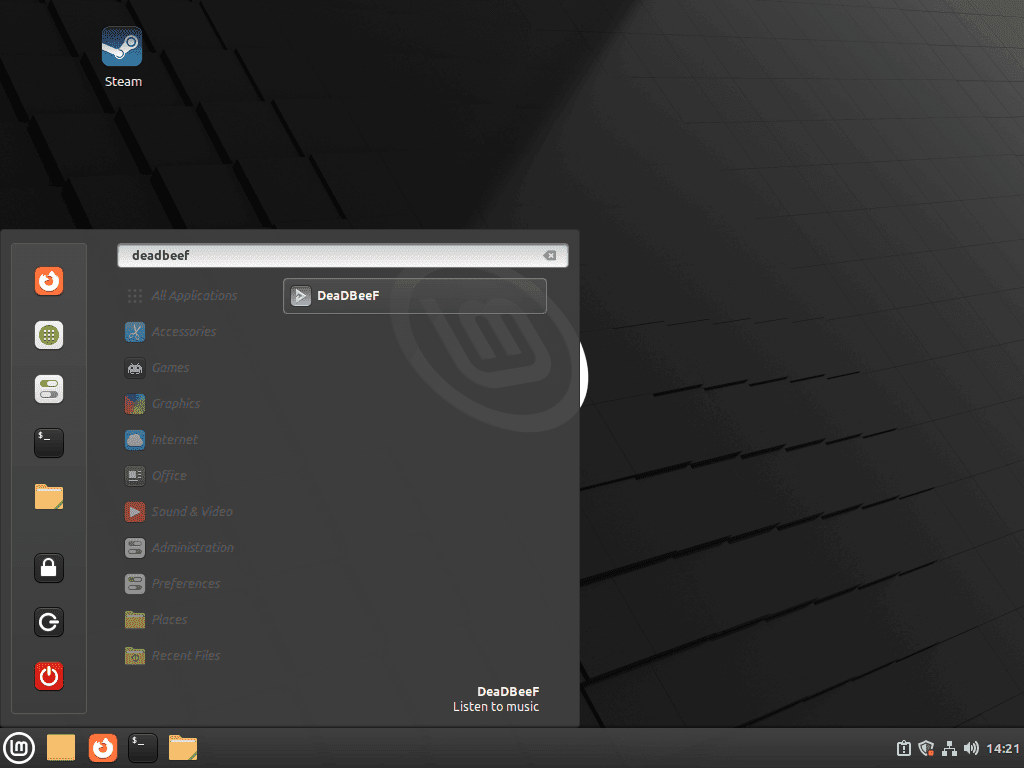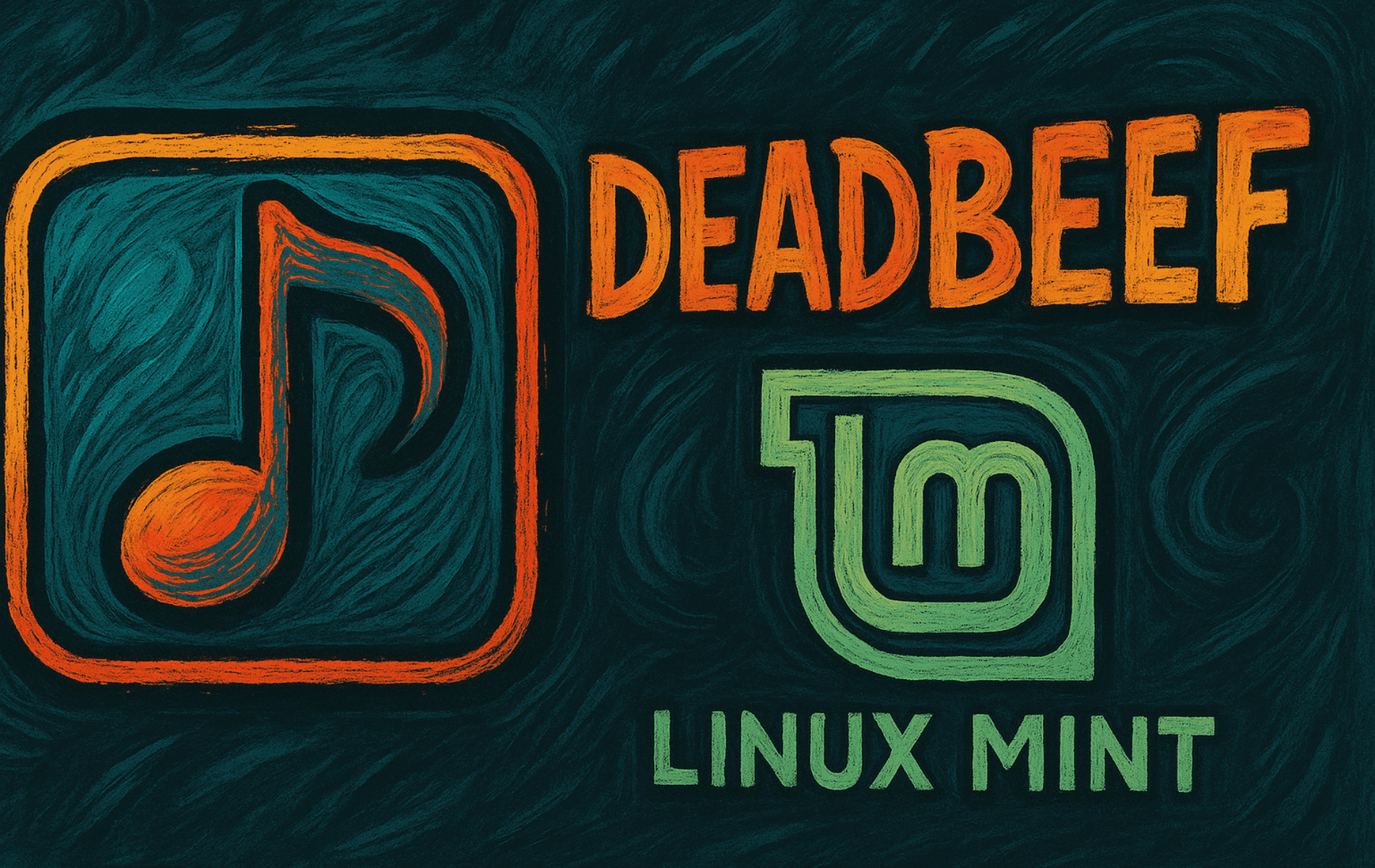Looking to install DeaDBeeF on Linux Mint? This lightweight audio player is built for people who want simplicity and performance without bloat. Whether you’re an audiophile or a casual listener, it handles high-quality playback with deep customization options for serious listeners. Additionally, it runs smoothly even on older hardware, making it a reliable choice for anyone seeking a powerful, resource-efficient music player.
Set up DeaDBeeF on the standard Ubuntu-based Linux Mint editions (Cinnamon, Xfce, and MATE) using the maintained PPA highlighted below. The repository tracks Mint’s Ubuntu base, so it stays compatible across supported releases and lets you install this streamlined audio player with confidence.
What Is DeaDBeeF Audio Player?
If you’re new to DeaDBeeF, think of it as a command-line-friendly music player that prioritizes efficiency and control over flashy interfaces. Unlike heavyweight players that bundle streaming services and cloud sync, DeaDBeeF focuses on local playback with precise control over your music library.
At its core, DeaDBeeF is designed around three key principles:
- Lightweight performance: Uses minimal system resources, making it ideal for older machines or server environments
- Plugin architecture: Extends functionality only when you need it, avoiding bloat
- Format versatility: Handles nearly every audio format without external codec hunting
This focus makes DeaDBeeF particularly appealing if you maintain a large local music collection, run Linux on modest hardware, or prefer customizing your playback environment to your exact needs.
The project ships with a classic GTK interface that feels instantly familiar if you’ve used Winamp or Foobar2000, yet it includes modern conveniences like tabbed playlists, gapless playback, and high-resolution audio decoding. DeaDBeeF also exposes deep customization through its layout editor and plugin system, so you can keep things minimal or build a fully tailored audio workstation.
Check if DeaDBeeF Is Already Installed
Most Linux Mint editions ship without DeaDBeeF, but it takes a second to confirm before you add new repositories. First, run the following command to see whether the package already exists on your system:
apt list --installed deadbeefIf the output shows [installed], you can skip the installation section and jump straight to launching or configuring the player.
Update Your Linux Mint System Before Installation
Before installing, update your system to ensure all packages are current. This step prevents compatibility issues during the installation process.
Open a terminal and run:
sudo apt update && sudo apt upgrade -yAdd the DeaDBeeF PPA
What is a PPA? A Personal Package Archive (PPA) is a software repository hosted on Launchpad that allows developers to distribute the latest versions of their applications directly to users. By adding a PPA, you can access newer or specialized software that may not be available in the default Linux Mint repositories. However, PPAs are maintained by third parties, so always ensure you trust the source before adding one to your system.
Next, add the community-maintained DeaDBeeF PPA repository curated by Pavel Kabets, which contains the latest stable and development builds. Choose the version that suits your needs and only add PPAs you trust.
Select one of the repositories below. Note that mixing the stable and development PPAs can lead to conflicting packages, so stick with the stable channel unless you specifically need to test bleeding-edge features.
Option 1: Add the Stable PPA (Recommended)
For most users, the stable version is the best choice for reliability. Add it with the following command:
sudo add-apt-repository ppa:spvkgn/deadbeef -yOption 2: Add the Development PPA (Optional)
To explore experimental features, use the development PPA instead. If you already enabled the stable PPA, remove it first so you only pull packages from one source:
sudo add-apt-repository --remove ppa:spvkgn/deadbeef -ysudo add-apt-repository ppa:spvkgn/deadbeef-devel -yDevelopment versions may include untested features and are less stable than the stable release. Only use this PPA if you want to test experimental functionality or help with bug reporting.
Update Package Sources
Once you’ve added the PPA, update the package list to include the newly added repository:
sudo apt updateInstall DeaDBeeF
After updating the package sources, proceed to install the DeaDBeeF application with the following command:
sudo apt install deadbeef -yLaunch DeaDBeeF
After DeaDBeeF is successfully installed, you can launch it using either the command line or the graphical interface. Follow the method that best suits your workflow.
Launch Using the Terminal (CLI)
For those who prefer the terminal, open DeaDBeeF by typing the following command:
deadbeefThis will start the music player in its default configuration.
Launch Using the Menu (GUI)
Alternatively, if you prefer a graphical approach, follow these steps to open DeaDBeeF:
- Open the Menu: Click the Menu button in your taskbar, typically located in the bottom-left corner.
- Search for DeaDBeeF: Type DeaDBeeF in the search bar or navigate to the Sound & Video category.
- Launch the Application: Click on the DeaDBeeF icon to open the player.
Once launched, you’ll be greeted by the DeaDBeeF interface, ready to customize and start your listening experience.


Set Up DeaDBeeF Plugins
To further enhance your DeaDBeeF experience, consider adding plugins. These extend functionality and unlock features like scrobbling, advanced equalization, and more. However, not all plugins are official or maintained by the DeaDBeeF team, so only download plugins from trusted sources and review documentation or user feedback when possible to ensure compatibility and security. Additionally, follow the steps below to set up the plugins directory and install additional plugins.
Step 1: Create the Plugins Directory
By default, DeaDBeeF does not create a directory for plugins, so you need to create it manually. First, open a terminal and run:
mkdir -p ~/.local/lib/deadbeef/This command creates the ~/.local/lib/deadbeef/ directory where DeaDBeeF will look for plugins. Linux Mint only ships 64-bit editions, but the DeaDBeeF binary still checks lib rather than lib64, so you can rely on this path for every supported flavor.
Step 2: Download and Install Plugins
- Visit the DeaDBeeF Plugins Page to browse available plugins.
- Download the plugin(s) you want to install. These are typically provided as compressed files (e.g.,
.zipor.tar.gz). If you need help with extraction techniques, check our comprehensive unzip command guide. - Extract the plugin files. Most plugins contain
.soshared library files (the actual plugin binaries that DeaDBeeF loads) inside compressed archives. Shared libraries are Linux’s equivalent of Windows DLL files, containing executable code that programs can load at runtime. Use the command that matches the archive format you downloaded:
If you downloaded a .zip archive:
unzip plugin-name.zip -d ~/Downloads/plugin-temp/If you downloaded a .tar.gz archive:
tar -xf plugin-name.tar.gz -C ~/Downloads/plugin-temp/Then locate the .so file(s) inside the extracted directory and move them to the DeaDBeeF plugins folder:
find ~/Downloads/plugin-temp/ -type f -name "*.so" -exec mv "{}" ~/.local/lib/deadbeef/ \;Replace plugin-name.zip or plugin-name.tar.gz with the actual downloaded file name. The extraction command you chose unpacks everything into a temporary directory, and the final command finds all .so files before moving them into the path where DeaDBeeF expects to load plugins. This ensures each plugin lands at ~/.local/lib/deadbeef/*.so without nested subdirectories, regardless of the archive’s internal structure.
Step 3: Enable Installed Plugins
After placing the plugins in the correct directory, follow these steps to activate them in DeaDBeeF:
- Launch DeaDBeeF.
- Navigate to Edit > Preferences in the menu bar.
- Select the Plugins tab.
- Locate the newly installed plugin(s) in the list and enable them if necessary by checking the corresponding box.
Your plugins are now installed and ready to use. You can now customize your audio experience with the added features.
Update DeaDBeeF Installation
Keeping DeaDBeeF and your Linux Mint system up to date ensures you benefit from the latest features, improvements, and security patches.
Step 1: Update DeaDBeeF
To check for and apply updates specifically for DeaDBeeF, use the following command:
sudo apt update && sudo apt install --only-upgrade deadbeefThis command refreshes package lists and upgrades only DeaDBeeF to the latest version available in the PPA without touching unrelated packages.
Step 2: Update All System Packages
Alternatively, to ensure your entire system, including DeaDBeeF and all other packages, is up to date, run:
sudo apt update && sudo apt upgrade -yThis updates all installed packages on your system to their latest versions.
Remove DeaDBeeF from Linux Mint
If you no longer need DeaDBeeF, you can easily remove it along with any associated PPAs. Follow these steps for a clean and complete uninstallation.
Step 1: Uninstall DeaDBeeF
Open a terminal and run the following command to remove DeaDBeeF:
sudo apt remove deadbeef -yThis command removes the application but retains its configuration files. To remove all associated files, proceed to the next step.
Step 2: Purge Configuration Files
To completely remove DeaDBeeF, including its configuration files, run:
sudo apt purge deadbeef -yStep 3: Remove the DeaDBeeF PPA
If you added the DeaDBeeF PPA during installation, you can remove it with these commands:
- Remove the stable PPA:
sudo add-apt-repository --remove ppa:spvkgn/deadbeef -y- Remove the development PPA (if applicable):
sudo add-apt-repository --remove ppa:spvkgn/deadbeef-devel -yStep 4: Clean Up Your System
Finally, after uninstalling and removing the PPAs, update your package list and clean up unnecessary files:
sudo apt update && sudo apt autoremove -yTroubleshooting Common Issues
If you encounter problems while installing or using DeaDBeeF on Linux Mint, try these solutions to common issues:
- DeaDBeeF won’t launch or crashes immediately: Open a terminal and run
deadbeefto see any error messages. Missing libraries or dependencies are a common cause. Try reinstalling withsudo apt install --reinstall deadbeefor check for missing packages in the output. - No sound output: Ensure your system audio is not muted and that DeaDBeeF is using the correct output device. Check Edit > Preferences > Output in DeaDBeeF. If you use PulseAudio or PipeWire, make sure those services are running.
- PPA errors during update or install: If you see errors related to the PPA, you may need to remove and re-add it. Use
sudo add-apt-repository --remove ppa:spvkgn/deadbeefand then re-enable your preferred channel withsudo add-apt-repository ppa:spvkgn/deadbeeforsudo add-apt-repository ppa:spvkgn/deadbeef-devel. Also, check your network connection and runsudo apt updateto refresh package lists. - Plugins not showing up or not working: Double-check that plugins are placed in the correct directory (
~/.local/lib/deadbeef/) and have the right permissions. Only use plugins compatible with your DeaDBeeF version. Restart DeaDBeeF after adding new plugins.
Additionally, for more help, visit the DeaDBeeF FAQ or the GitHub Issues page to search for solutions or report bugs.
Useful Links
Here are some helpful resources to enhance your experience with DeaDBeeF on Linux Mint:
- DeaDBeeF Stable PPA – Access the stable version of DeaDBeeF through the official Launchpad PPA.
- DeaDBeeF Development PPA – Explore experimental features by using the development PPA.
- Official DeaDBeeF Website – Learn more about DeaDBeeF and its features.
- DeaDBeeF GitHub Repository – Access the source code, contribute, or report issues on GitHub.
- DeaDBeeF FAQ – Find answers to common questions and troubleshooting tips.
Conclusion
DeaDBeeF delivers a high-quality audio experience tailored for Linux users who value performance and customization. The lightweight design handles everything from casual playback to audiophile-grade DSP processing without consuming excessive resources. With support for nearly every audio format, extensive plugin options, and precise command-line controls, you can confidently build a music setup that matches your exact workflow on Linux Mint.


